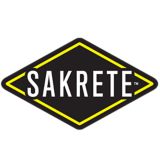
SAKRETE PSI 6000
SAKRETE PSI 6000 is a pre-blended, high strength, synthetic fibre reinforced, air-entrained concrete material. It is reinforced with alkali-resistant fibres to resist cracking and eliminate the need for wire mesh in many non-critical applications. It also contains an airentraining admixture which will produce a concrete with superior freeze-thaw and salt-scaling durability. Use for new concrete construction projects, concrete overlays and repairs where a thickness of 5 cm (2”) or more is required. Open to foot traffic in approximately 24 hours.
- High strength (42 MPa/6000 psi)
- Reinforced with alkali-resistant fibres to resist cracking
- Air-entrained for cold weather durability
- Excellent workability
Usage
For new concrete construction projects, concrete overlays and concrete repairs. Use to construct footings, sidewalks, slabs, steps and patios. Use to set deck posts, fence posts and poles.
Advantages
- High strength (42 MPa/6000 psi)
- Reinforced with alkali-resistant fibres to resist cracking
- Air-entrained for cold weather durability
- Excellent workability
Packaging
30 KG (66 lb) bag
FAQ
Concrete must be fully cured (approximately 28 days) and dry before painting. Refer to paint manufacturer directions for application instructions.
30 KG (66 lb) yields approximately 0.014 m³ (1/2 ft³).
Curing means maintaining proper moisture and temperature. Allow newly placed material to set until surface is hard to the touch. SAKRETE PSI 6000 will set in approximately 6 hours. Keep material damp or cover with plastic to prevent evaporation of mix water for at least three (3) days. Protect from freezing for at least 24 hours. Placed concrete can be open to foot traffic in 24 hours.
- Planning: Position layout stakes aligned with the project borders. Place corner stakes 30 cm (12 in) outside the finished slab area. Join stakes together with string, the corners should overlap. String lines will show the planned layout and provide the height form boards are to be set at.
- Excavating: The total depth of an excavation approx. 13 cm (5 in) to 15 cm (6 in) should be determined by allowing for 5 cm (2 in) minimum of compacted crushed stone under 8 cm (3 in) to 10 cm (4 in) of concrete. Excavate 15 cm (6 in) beyond string lines to allow room for forms. Spread crushed stone evenly throughout the excavation and compact well using a portable vibrator, roller, or hand tamper.
- Forming: Using straight 5 cm (2 in) x 10 cm (4 in) lumber, cut forms to length, then position so inside edges are below the string line. Drive pointed 5 cm (2 in) x 10 cm (4 in) stakes into ground at 3 ft (1 m) spacing to support forms. Screw together all forms, braces, and corners from outside the work area. NOTE: Adjust forms before securing to direct rainwater run-off, with a slope approximately 0,32 cm (1/8 in) per 30 cm (1 ft).
- Curving: Create curves by attaching 0,32 cm (1/8 in) hardboard to inside corners of forms. Drive support stakes behind the curved form. Place expansion joint board against adjoining surfaces to allow independent movement. Treat the inside of the forms with a commercial release-agent or vegetable oil prior to pouring.
- Placing: After mixing the concrete, place and consolidate inside the forms, slightly overfilling and roughly levelling. Work a pointed trowel along inside edges of the forms removing trapped air pockets. Tap the forms with a hammer for smoother sides. NOTE: Mixing, placing, and finishing should be timed to make sure concrete does not harden before finishing.
- Levelling: Level concrete, moving a straight-edged board, overlapping the forms, in a sawing motion across concrete, removing any excess and filling low areas. Then float the concrete smooth using a wood, magnesium, or aluminum float trowel. Stop floating when bleed water accumulates on the surface.
- Finishing: After bleed water evaporates, finish as desired. It is recommended, especially for air-entrained concrete, to use a wood, magnesium, or aluminum float trowel for a smooth surface. For a textured surface, use a broom or brush. Use an edger tool to finish edges. NOTE: Finishing cementitious materials too early, or overworking the materials can cause dusting, cracking, scaling and a weak surface.
- Jointing: Stress control joints are placed to control where slabs crack, along a predetermined path. Use either a hand jointer while the mix is soft or saw cut 6 to 18 hours after hardening. The joint should be 1/5 of the full thickness of the slab and every 2,4 m (8 ft) in both directions. Adjust down for appearances (centring).
- Curing: See below.
- Excavation: Dig hole with an auger or shovel to required depth (hole should extend below the frost line). Allow a 2-inch (5 cm) clearance on each side of post. A typical 4-inch (10 cm) x 4-inch (10 cm) post will require an 8-inch (20 cm) diameter.
- Placing: Position the post in hole and pour in mixed concrete. Align post using a level and check the vertical position. Cross-brace post for support while mix is wet. Allow to set for 24 hours then remove bracing and top with soil.
- Curing: See below.
Empty contents of bag into mortar box, wheelbarrow, or mechanical mixer. When mixing by hand, form a crater for adding water. Add approximately 2.2 L (2.25 qt) of clean water per 30 kg (66 lb) bag or enough to achieve a workable mix. Avoid a soupy mix. Excess water reduces strength and durability and can cause cracking. In cold weather, use warm water to accelerate the set. In hot weather, use cold water to slow the set.
Mix and substrate temperatures should be maintained between +5 °C (40 °F) and +30 °C (86 °F) for at least 24 hours prior to and 48 hours after.
For temperatures below +5 °C (40 °F) refer to SAKRETE Fast Set.

